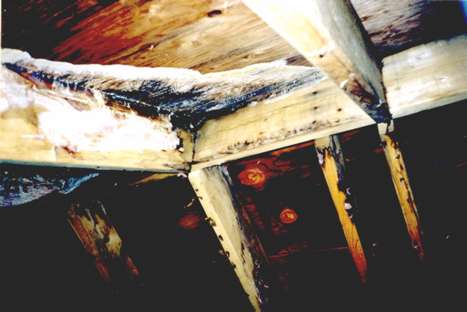 |
 |
 |
|
|
|
|
|
|
Solutions
Indoor Pools, Moisture, and Related Problems
|
Symptoms
-
Chlorine odors
-
Visible mold growth
-
Discoloration of wood and other building materials due to water stains
-
Weakening of the wood due to rot
-
Degradation of indoor air quality
Causes
-
Moisture laden air moves into wall/ roof cavities and condenses when it comes in contact with the cooler surfaces.
-
High levels of relative humidity, in conjunction with indoor temperature changes, create moist surfaces where mold and mildew can grow
-
Missing or incomplete vapor retarder
Side effects
-
Damage to interior woodwork and finishes
-
Rotting of wooden structural framing
-
Mold and mildew growth
Theory
Case Studies
FOAM-TECH Solutions
-
Perform initial building diagnostics and testing to identify causes of the problem. Tests may include infrared thermography, blower door testing, or temperature and humidity monitoring.
-
Isolate the climate controlled spaces.
-
Review the condition of vapor retarders currently installed.
-
Seal any air leaks resulting from infiltration or exfiltration from the building. Creating a tight building envelope is the first step to controlling the indoor environment.
-
If necessary, recommend the installation of mechanical ventilation systems to control the movement of air/moisture in and out of the building.



